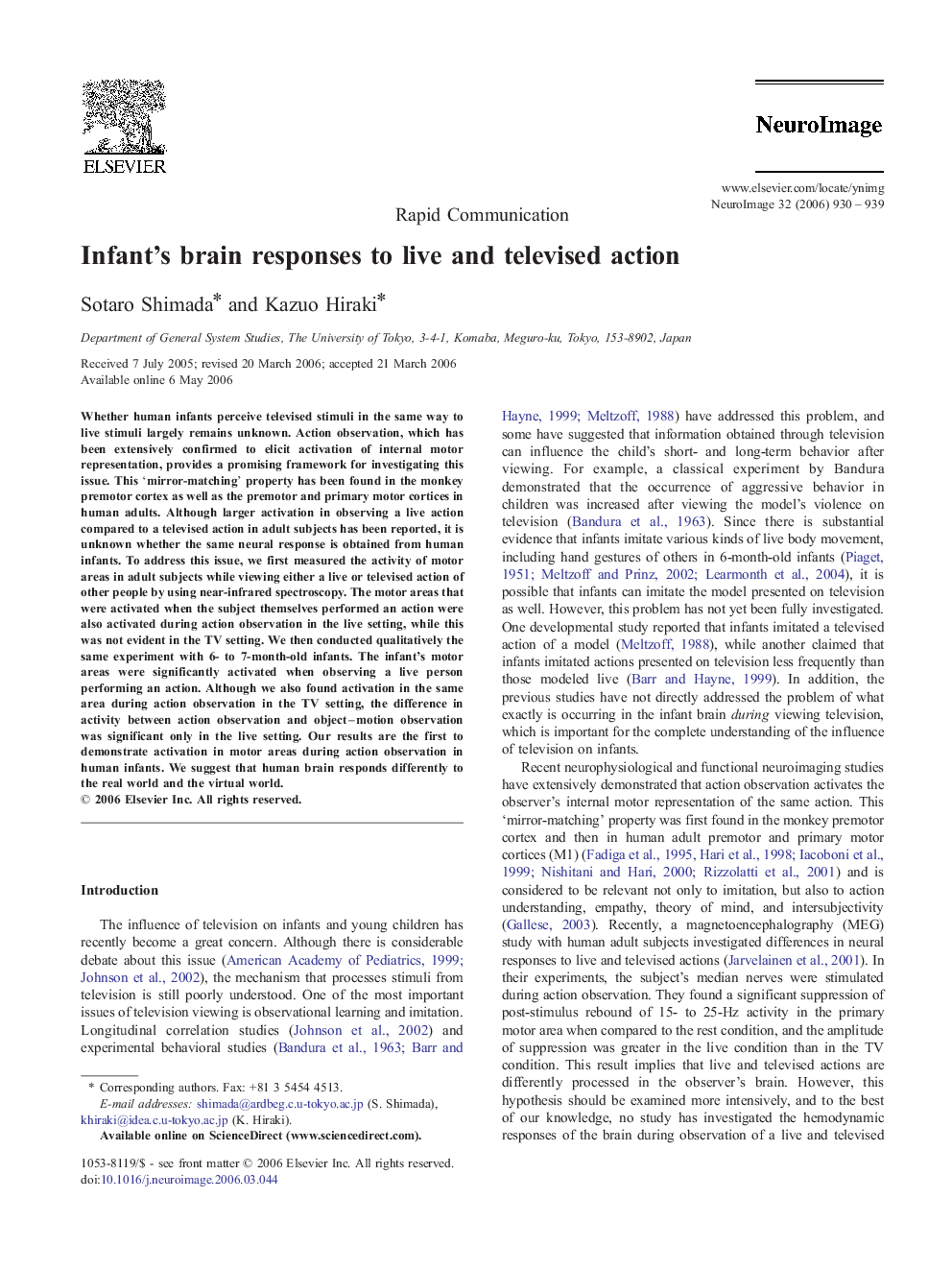| Article ID | Journal | Published Year | Pages | File Type |
|---|---|---|---|---|
| 3074286 | NeuroImage | 2006 | 10 Pages |
Whether human infants perceive televised stimuli in the same way to live stimuli largely remains unknown. Action observation, which has been extensively confirmed to elicit activation of internal motor representation, provides a promising framework for investigating this issue. This ‘mirror-matching’ property has been found in the monkey premotor cortex as well as the premotor and primary motor cortices in human adults. Although larger activation in observing a live action compared to a televised action in adult subjects has been reported, it is unknown whether the same neural response is obtained from human infants. To address this issue, we first measured the activity of motor areas in adult subjects while viewing either a live or televised action of other people by using near-infrared spectroscopy. The motor areas that were activated when the subject themselves performed an action were also activated during action observation in the live setting, while this was not evident in the TV setting. We then conducted qualitatively the same experiment with 6- to 7-month-old infants. The infant's motor areas were significantly activated when observing a live person performing an action. Although we also found activation in the same area during action observation in the TV setting, the difference in activity between action observation and object–motion observation was significant only in the live setting. Our results are the first to demonstrate activation in motor areas during action observation in human infants. We suggest that human brain responds differently to the real world and the virtual world.
